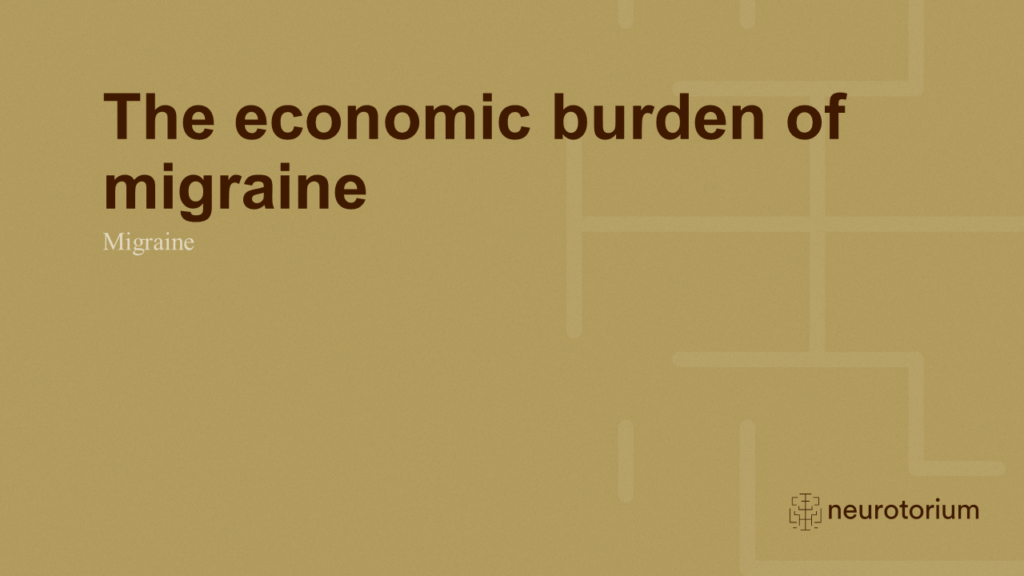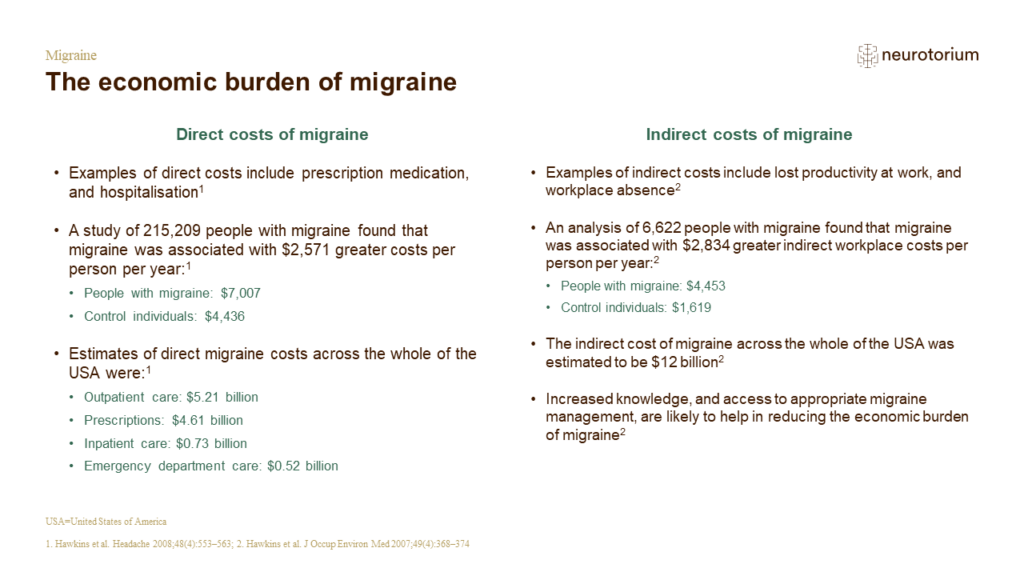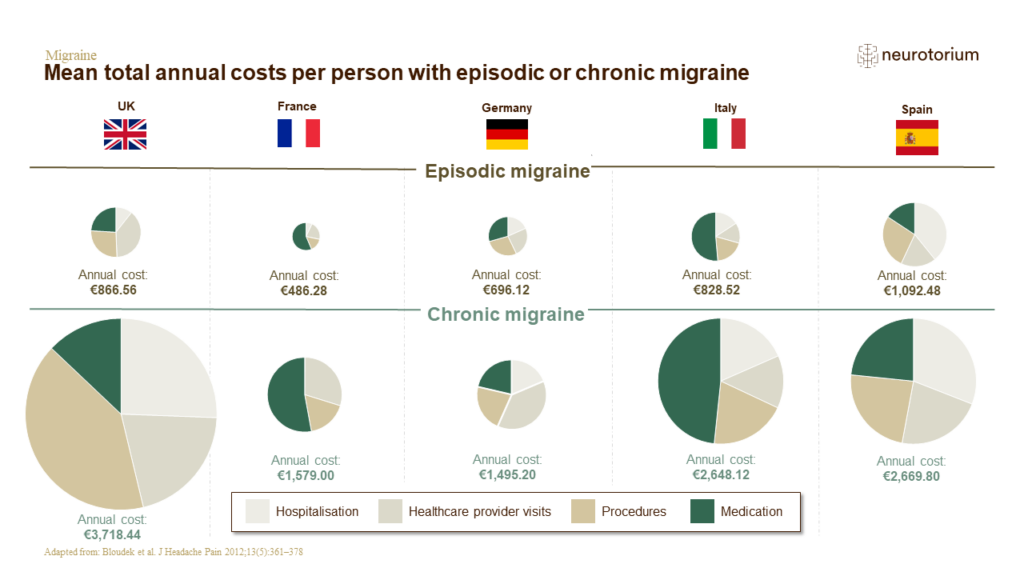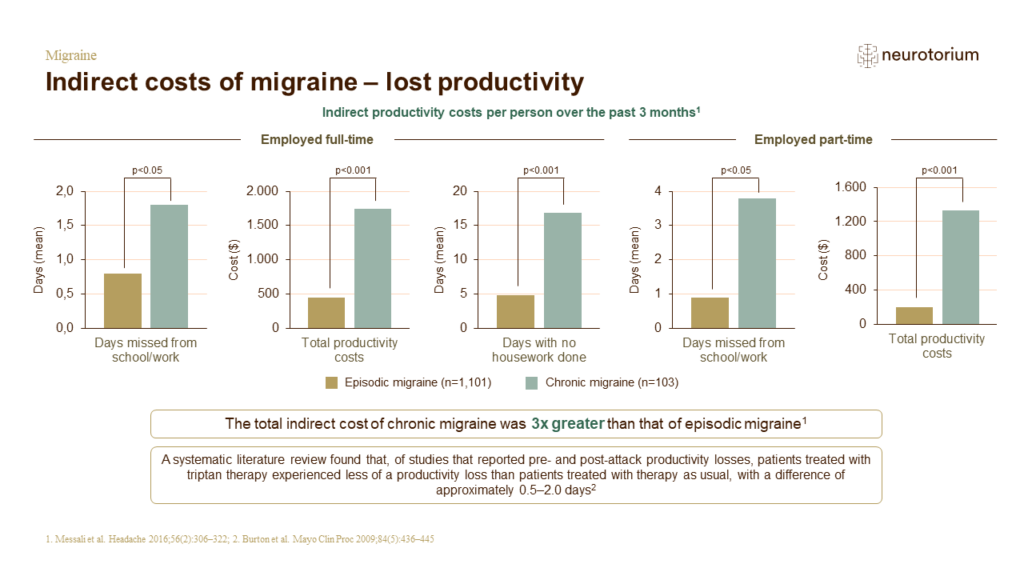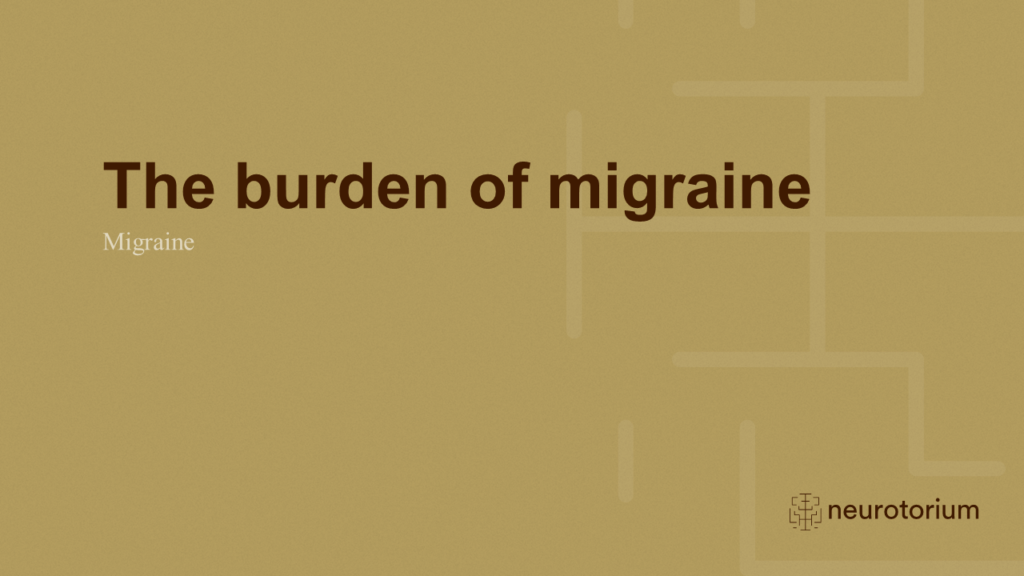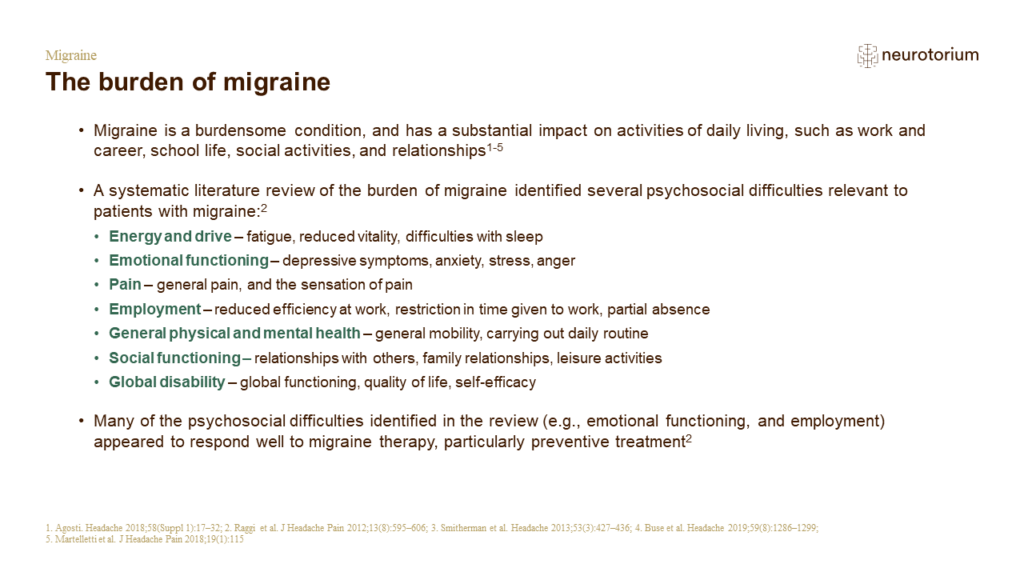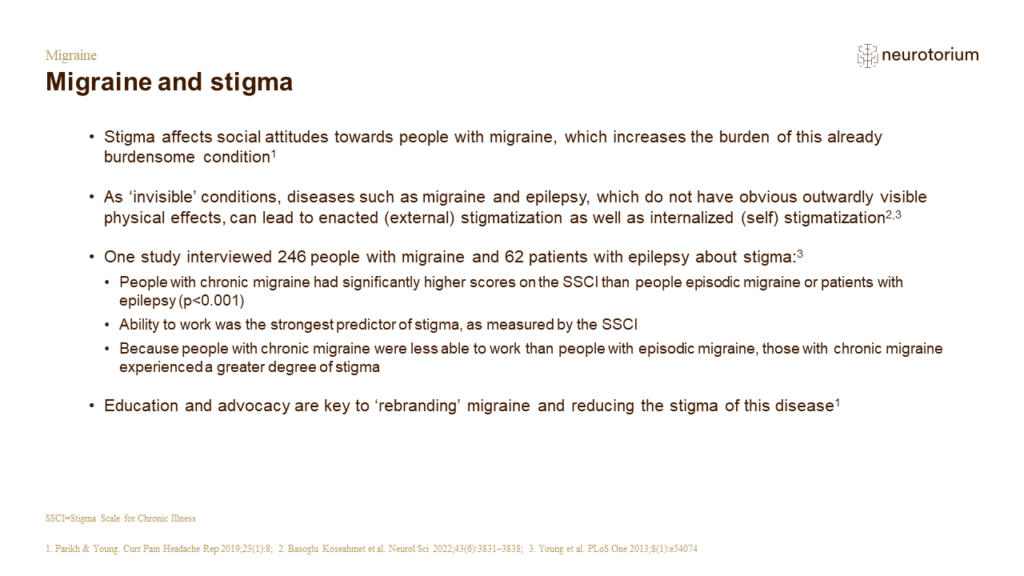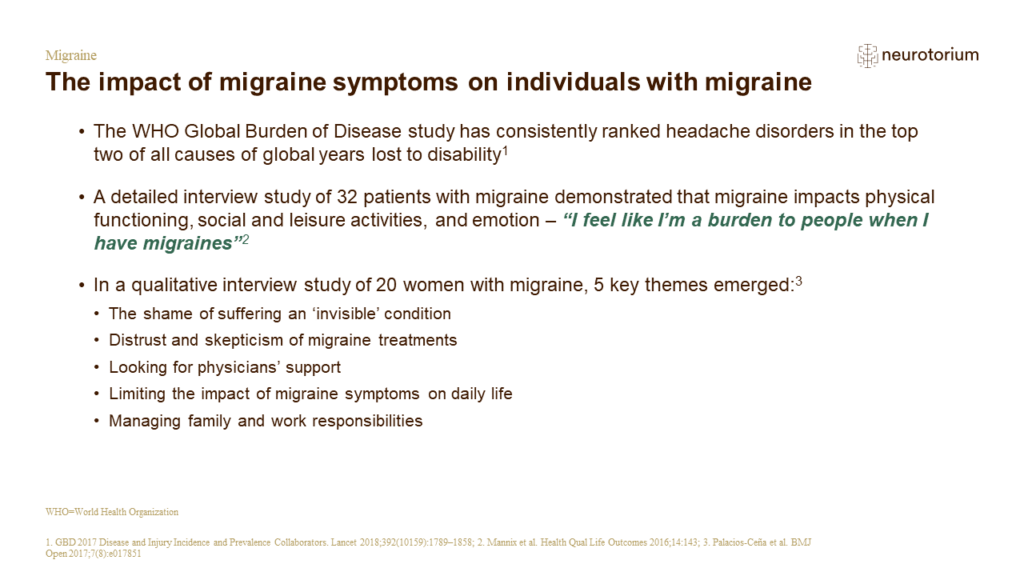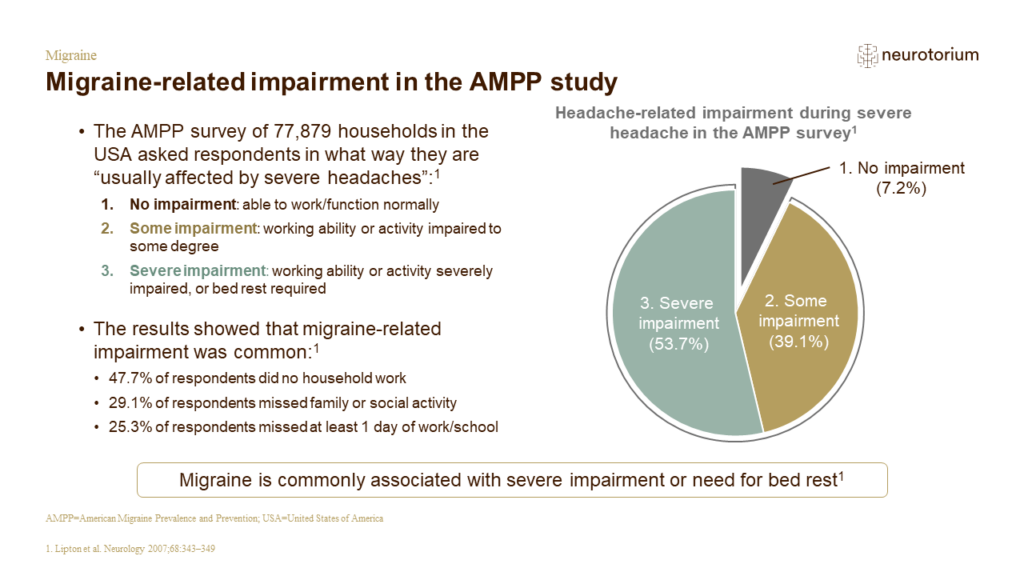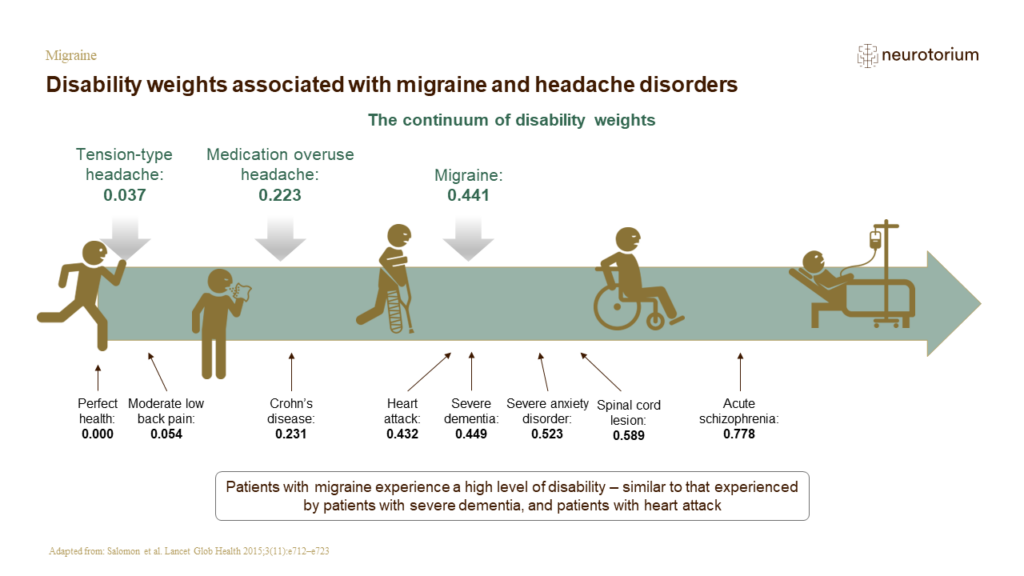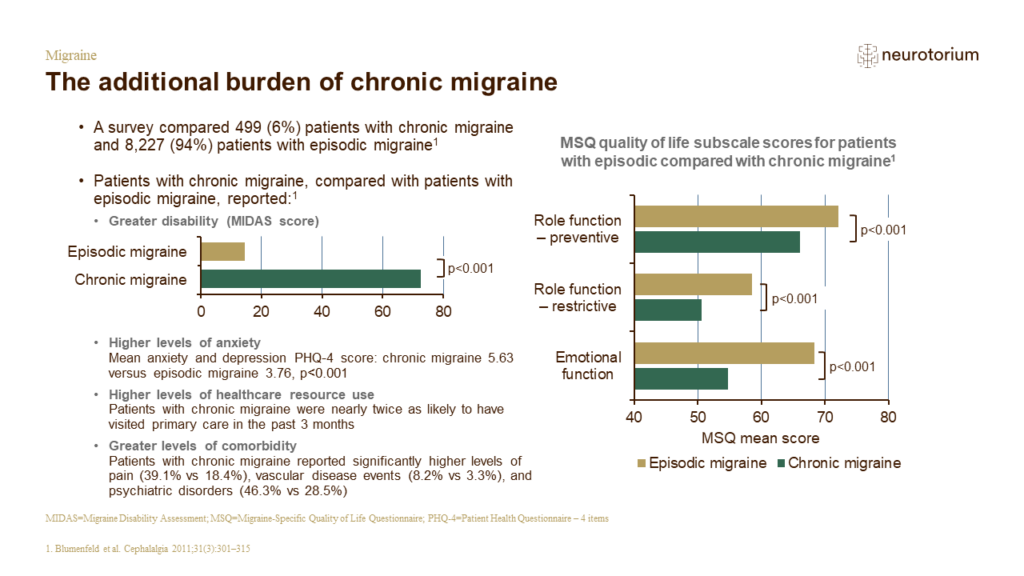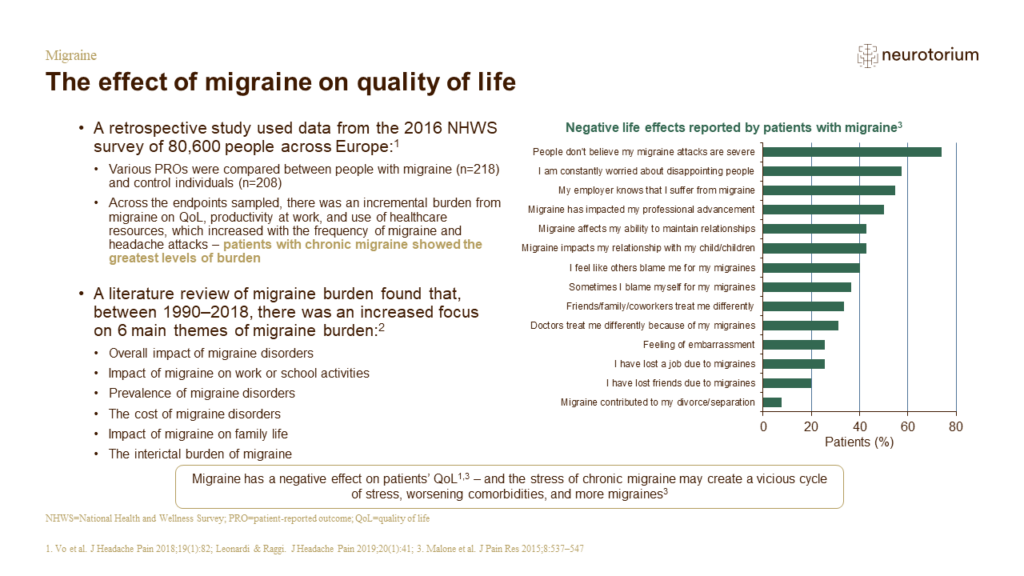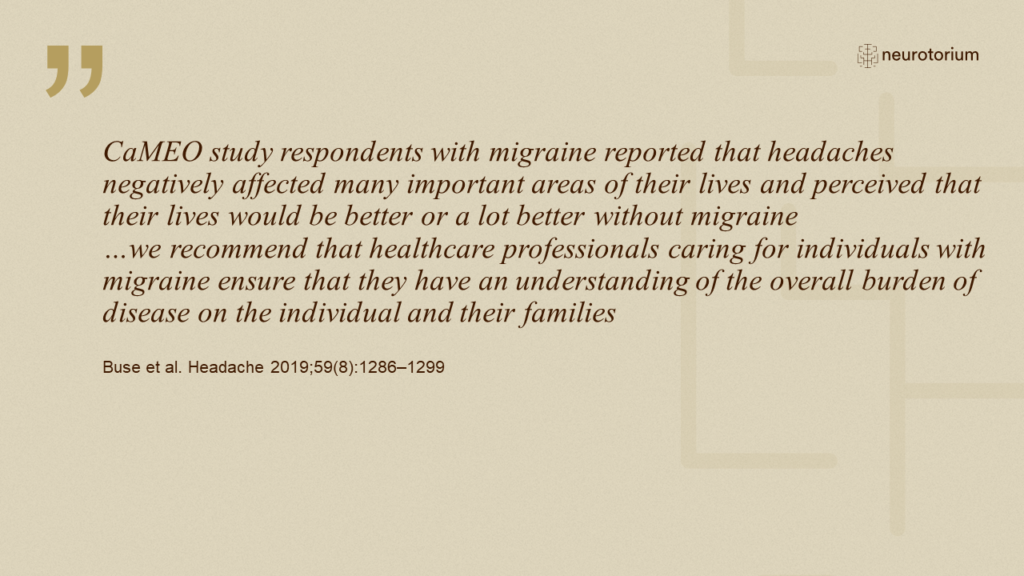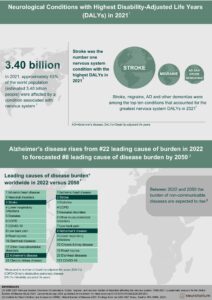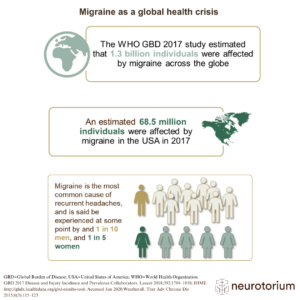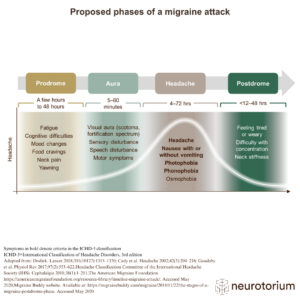Index for
slide deck
Introduction
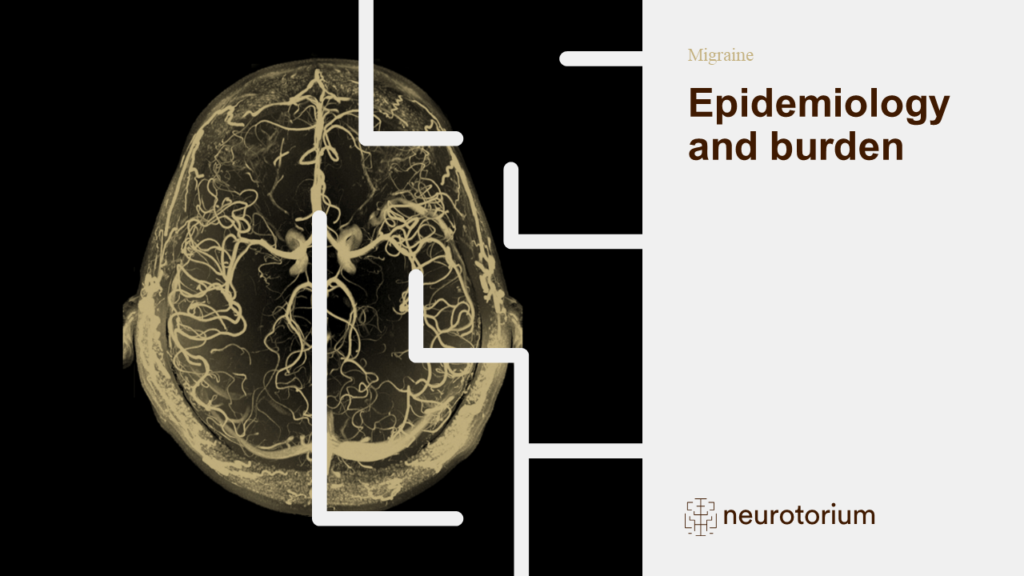
Migraine - Epidemiology and burden
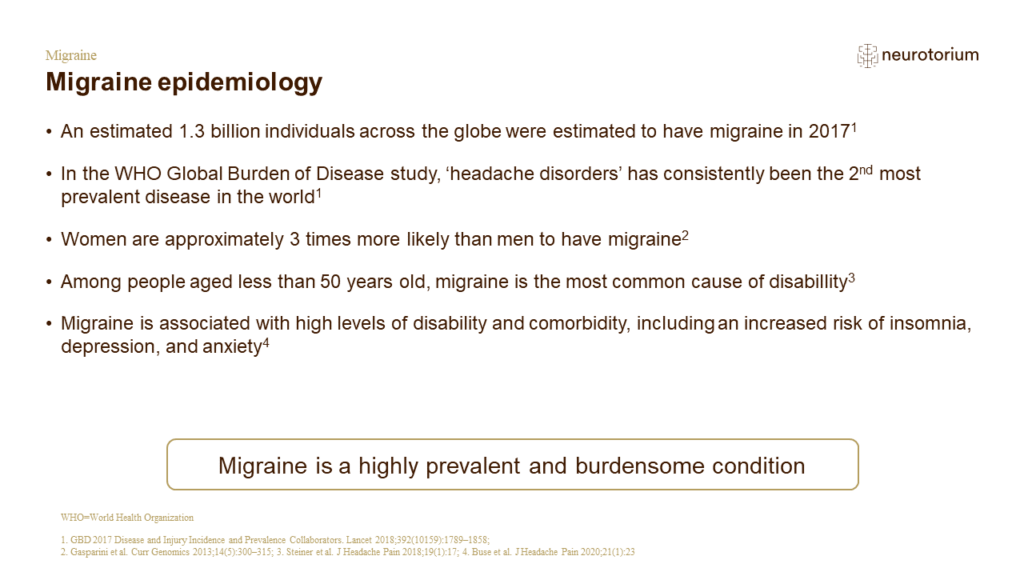
Migraine epidemiology
Migraine is a burdensome condition.[GBD, 2017; Steiner et al., 2018; Buse et al., 2020] The Migraine in America Symptoms and Treatment (MAST) study was an internet-based survey that questioned people with migraine about their headaches.[Buse et al., 2020] The results show…
Prevalence of migraine
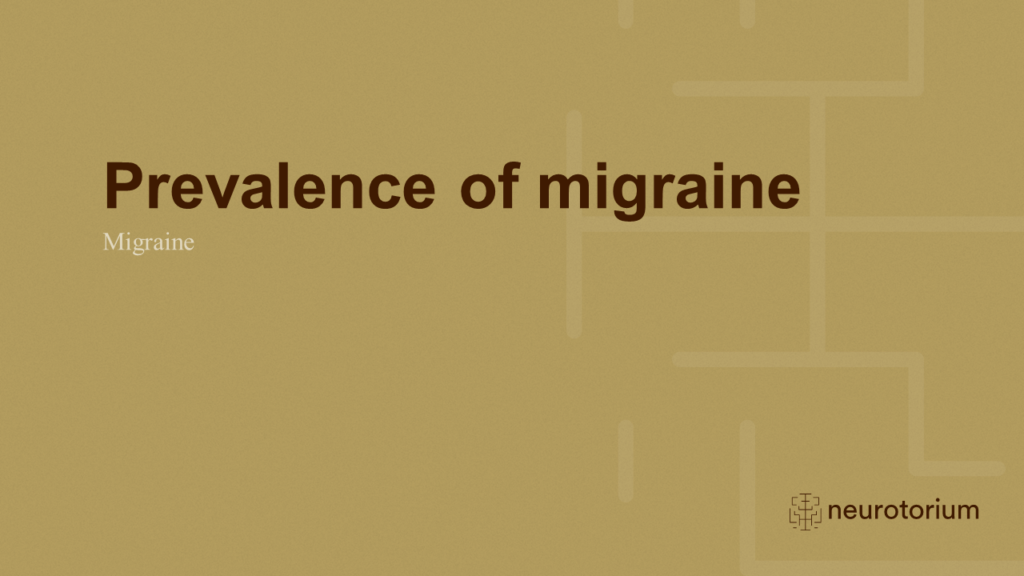
Prevalence of migraine
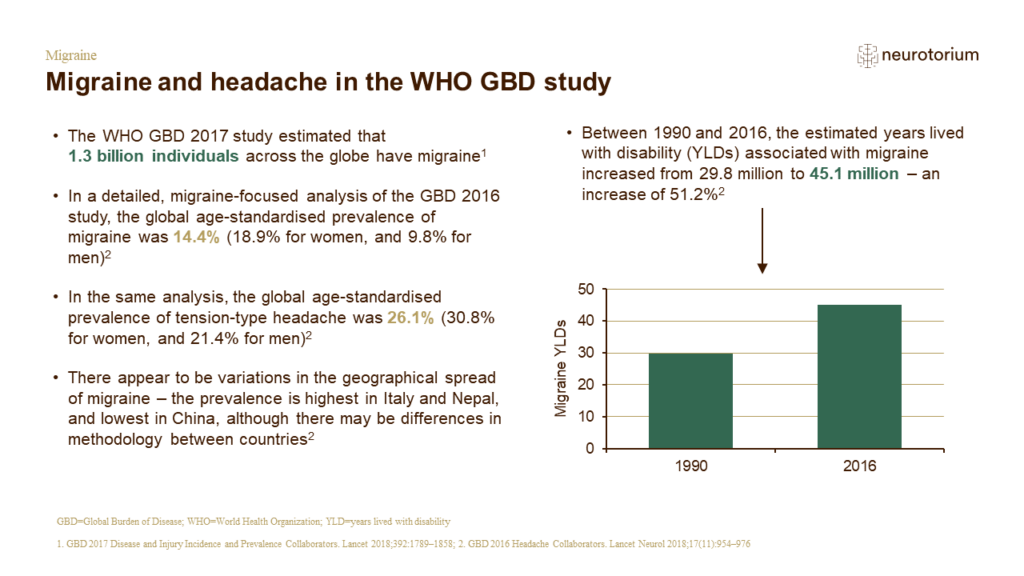
Migraine and headache in the WHO GBD study
The Global Burden of Disease (GBD) study takes a standardised approach to estimating incidence, prevalence, and years lived with disability (YLD) of various diseases and health states, often segmenting the data by age, sex, year, and geography.[GBD, 2017] An analysis of t…
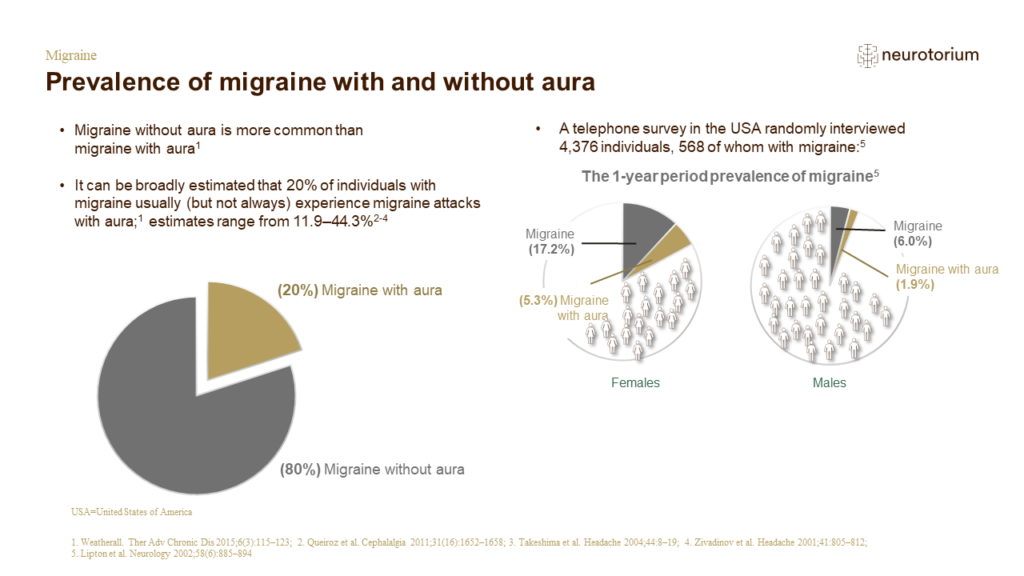
Prevalence of migraine with and without aura
Although estimates vary, approximately 20% of patients with migraine experience aura, albeit not during every attack.[Queiroz et al., 2011; Weatherall, 2015] The aura of migraine is usually visual, and can include flashes of light, moving patterns, or partial loss of visi…
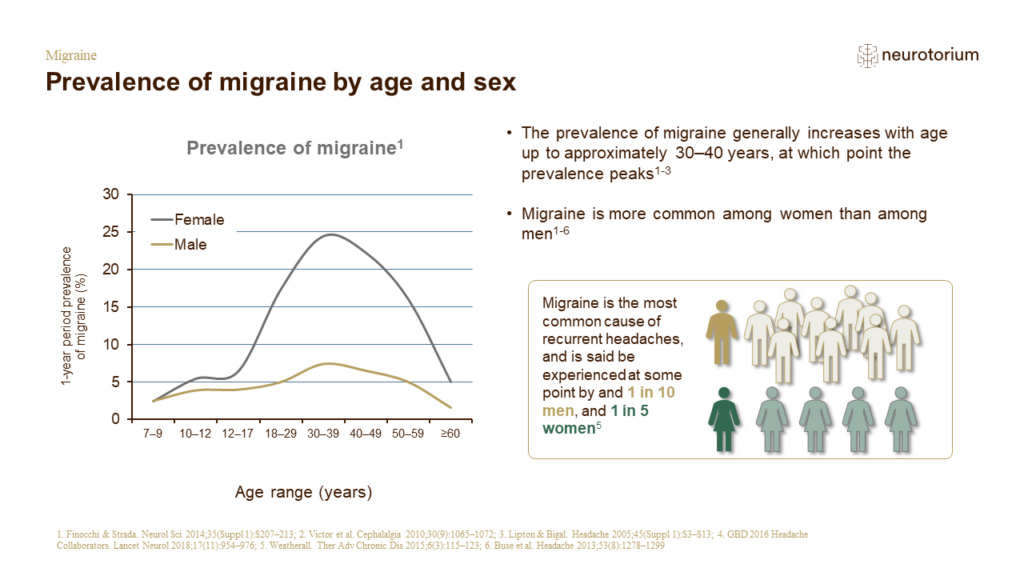
Prevalence of migraine by age and sex
There are wide variations in the reported prevalence of migraine, due to differences in factors such as study methodology, age of participants, and geography.[Lipton & Bigal, 2005] The Global Burden of Disease (GBD) study found that headaches were most burdensome in women…
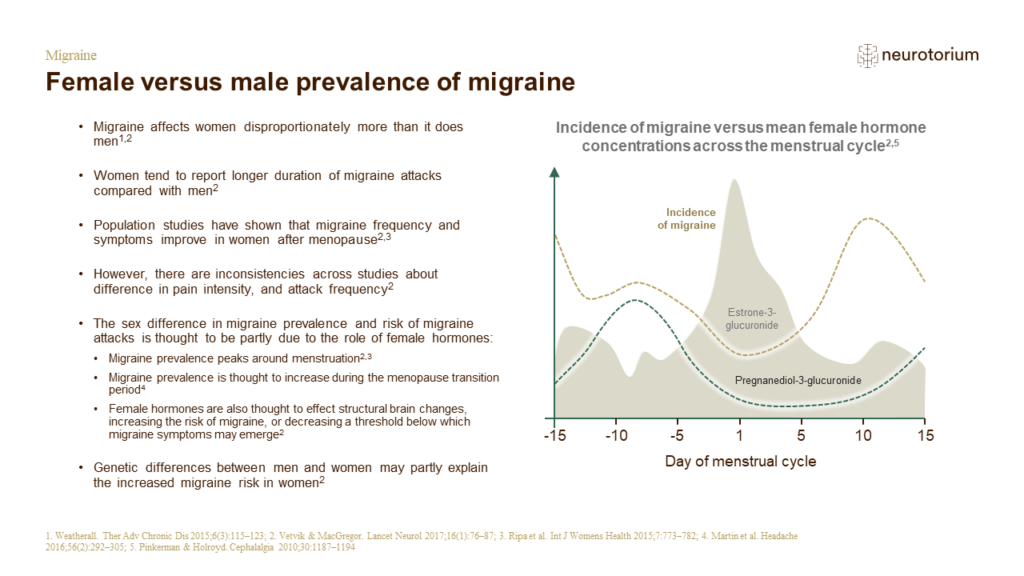
Female versus male prevalence of migraine
Migraine has a higher prevalence among women than it does among men.[Weatherall, 2015; Vetvik & MacGregor, 2017] A number of studies have found that women with migraine report a higher headache-related disability than men.[Vetvik & MacGregor, 2017] It has been argued that…
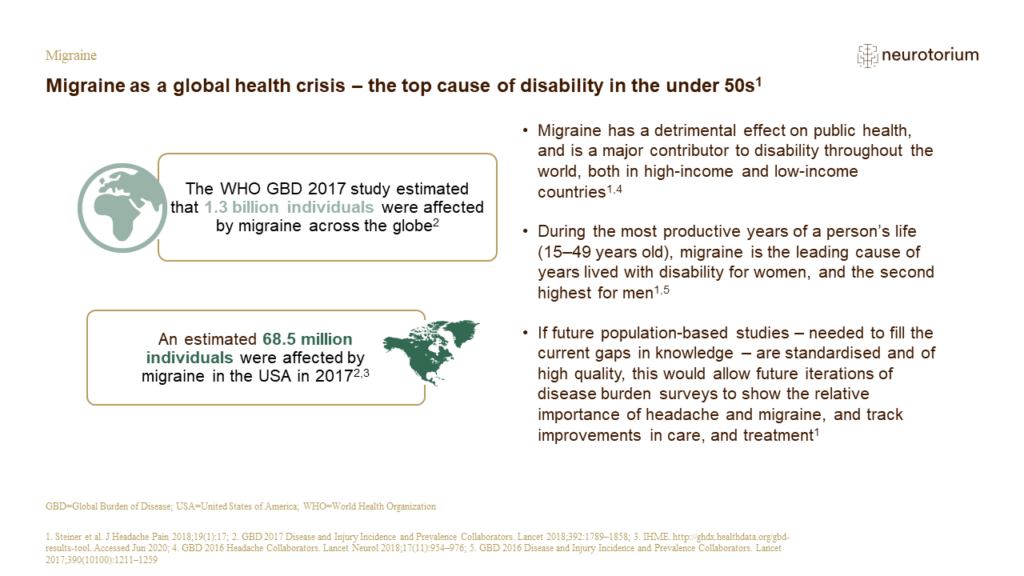
Migraine as a global health crisis – the top cause of disability in the under 50s
The Eurolight study was a European survey that gathered data from patients with headache in Austria, France, Germany, Ireland, Italy, Lithuania, Luxembourg, the Netherlands, Spain and the United Kingdom.[Katsarava et al., 2018] Of the 9,247 respondents, approximately a th…
Risk factors for the onset of migraine
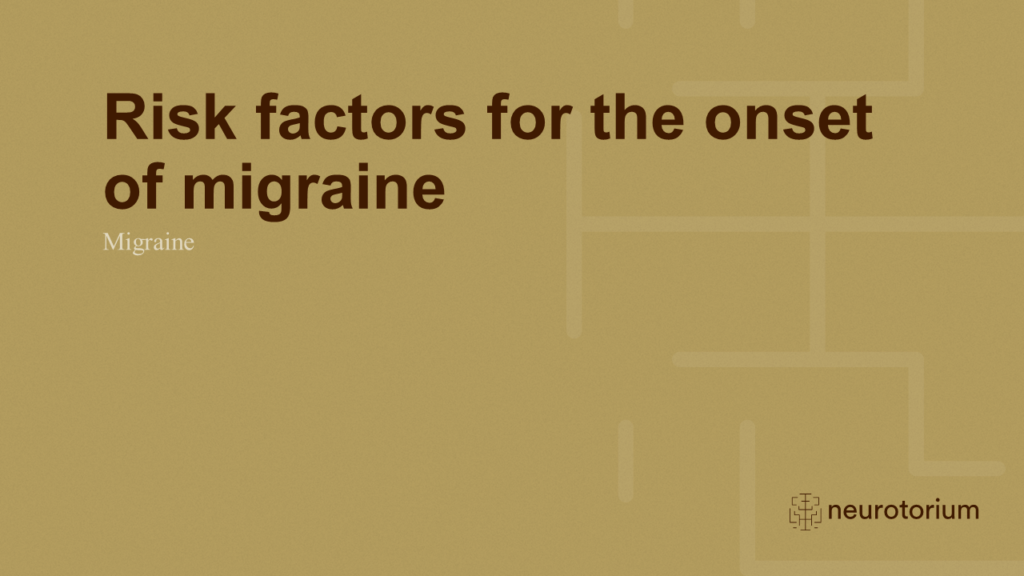
Risk factors for the onset of migraine
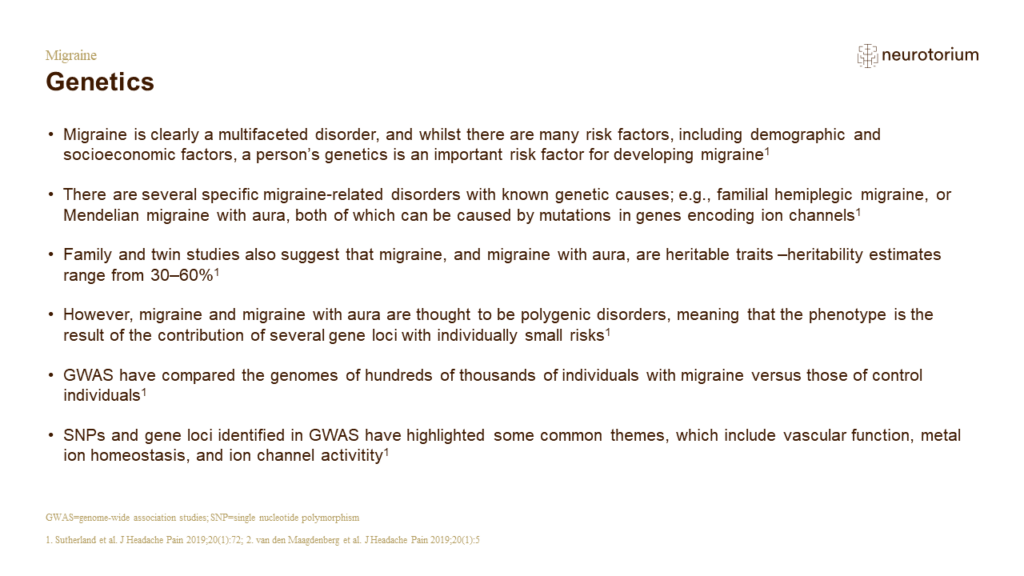
Genetics
Various approaches have been taken to unravel the complex genetics of headache and migraine disorders.[Sutherland et al., 2019] Linkage mapping analysis can trace genetic markers and candidate genes in family pedigrees of monogenic headache disorders.[Sutherland et al., 2…
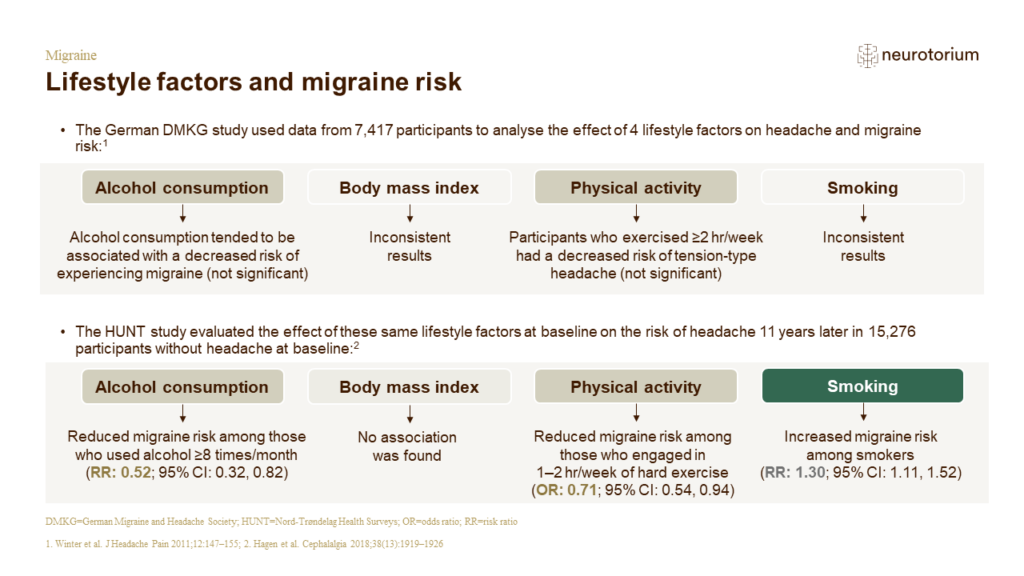
Lifestyle factors and migraine risk
The negative health effects of physical inactivity, alcohol overuse and misuse, smoking, and obesity are widely known. However, the interaction of these lifestyle factors with migraine risk is relatively poorly studied.[Hagen et al., 2018] In the two large-scale longitudi…
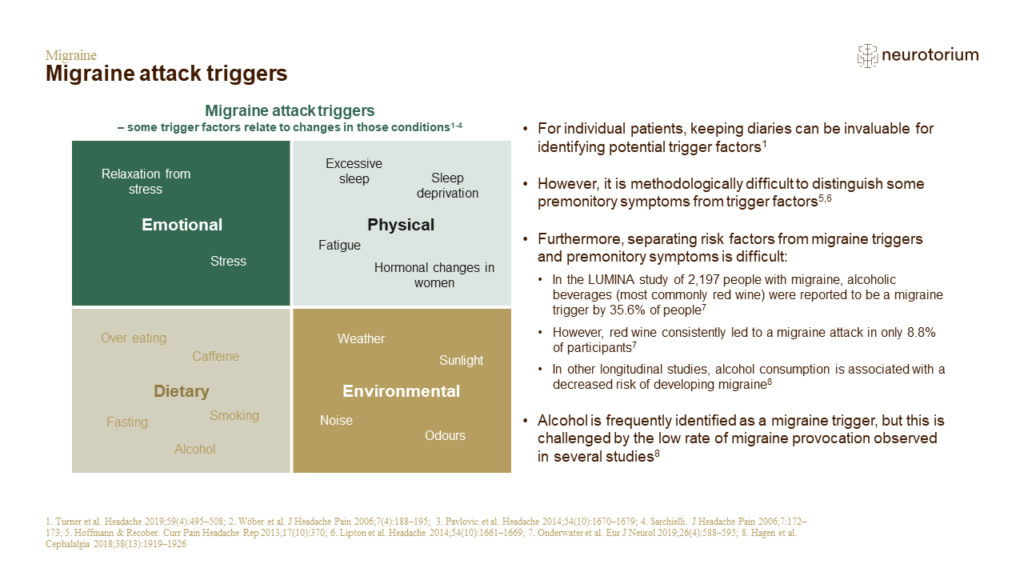
Migraine attack triggers
Various different migraine triggers have been identified, including emotional, physical, dietary, and environmental factors.[Migraine Trust; Pavlovic et al., 2014; Park et al., 2016; Sarchielli, 2006; Turner et al., 2019; Wöber et al., 2006] Migraine triggers are a comple…


